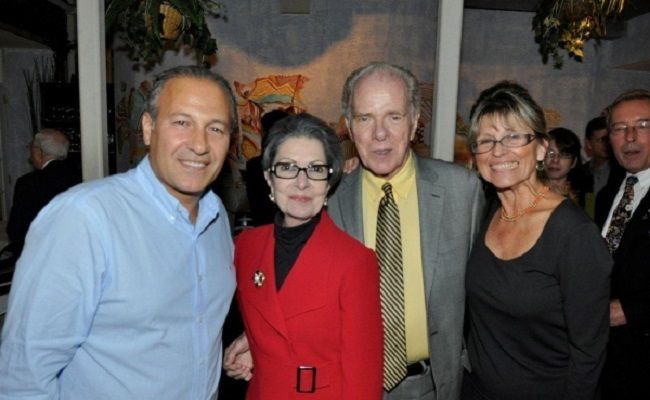- William Kennedy is a well-known American author.
- William is now 92 years old.
- Kennedy attended elementary education at Public School 20.
- Kennedy has a wife.
William Kennedy is a well-known American author. William Kennedy is well-known for his works such as “Ironwood,” “The Cotton Club,” and “The Ink Truck.”
He was a journalist before venturing into the fictional realm of literature.
Many of William’s works revolve around the fictional Irish-American Phelan family of Albany, New York.
Table of Contents
What is William Kennedy’s age?
His full name is William Joseph Kennedy. He was born in Albany, New York, on January 16, 1928.
William is now 92 years old. His parents are father William Joseph Kennedy and mother Mary Elizabeth (McDonald) Kennedy.
They were the descendants of Irish immigrants who arrived in North Albany in the nineteenth century.
Auther Kennedy grew up in the Irish-Catholic district of the North End, also known as Limerick.
William worked as an altar boy at Sacred Heart Church as a child, hoping to one day become a Catholic priest.
Furthermore, several of Kennedy’s family worked in politics.
“Big Jim” Carroll, his great-grandfather, was a ward leader.
His father ran the polls for the machine and drove William Jr. to Democratic Party rallies on occasion.
Two of his mother’s siblings were political operatives as well.
More Facts about William Kennedy
| Full Name: | William Kennedy |
| Age: | 93 years |
| Birthday: | 16 Jan |
| Birthplace: | Albany, New York |
| Nationality: | American |
| Gender: | Male |
| Horoscope: | Capricorn |
| Wife: | Ana Daisy (Dana) Segarra |
| Net Worth: | N/A |
| Height: | N/A |
| Profession: | Author, Journalist |
| Kids: | Three (Dana, Katherine, Brendan) |
The education of Kennedy, William
Kennedy attended elementary education at Public School 20.
When he was in his seventh school, he became interested in the realm of print journalism.
He started sketching cartoons and even launched his own newspaper.
He began writing for the school newspaper when he started high school at Christian Brothers Academy.
Later, he attended Christian Brothers Academy.
After high school, Kennedy moved to Loudonville, New York, to attend Siena College.
He received his BA in 1949. He was named executive editor of the collegiate newspaper, the Siena News.
Willaim Kennedy also enrolled in a creative writing program at the University of Puerto Rico at Rio Piedras taught by famed novelist Saul Bellow.
Who is the wife of William Kennedy?
William Kennedy has a wife. William Kennedy met Ana Daisy (Dana) Segarra while working in Puerto Rico.
She performed as a dancer, singer, and actress.
The couple later married in Puerto Rico in 1957, however, the exact date of their wedding is uncertain.
Their three children are Dana, Katherine, and Brendan.
He is currently residing in Averill Park, New York, a town approximately 16 miles east of Albany.
line of work of Kennedy, William
After obtaining his degree, Kennedy moved on to serve as a sports editor and columnist for the Glens Falls Post Star.
He was drafted into the US Army in 1950 and sent to the Fourth Division in Europe.
However, his journalistic abilities were not overlooked during his tenure in the Army.
Until his discharge in 1952, William Kennedy worked on the division’s newspaper.
William Kennedy later returned to his hometown and obtained a job at the Albany Times-Union in 1952.
He stayed at the Union for four years before obtaining a job with the Puerto Rico World Journal.
Unfortunately, the daily folded after nine months, throwing William Kennedy out of employment.
William finally landed a job at the Miami Herald and spent some time there before returning to Puerto Rico in 1957.
After two years in Puerto Rico, William was named the first managing editor of the San Juan Star, a new newspaper.
After his marriage in Puerto Rico, William Kennedy began writing fiction.
This is when he enrolled in Saul Bellow’s creative writing class.
Kennedy’s first forays into fiction delighted Bellow, who pushed him to continue polishing his talent.
William Kennedy attempted to write stories about Puerto Rico for a period.
He did, however, struggle to write authoritatively about this place without seeming like a tourist.
William soon discovered his muse, who persuaded him to return to his hometown of Albany.
He left the San Juan Star two years after starting there.
He did it so he could concentrate on his creative writing instead.
In 1963, Willaim Kennedy returned to Albany.
He was 35 years old and had already ascended as far as he could in the world of print journalism.
However, Kennedy’s father’s health was deteriorating, so he accepted a part-time feature writer position at the Albany Times-Union.
He did so in order to pay his bills while working on his artistic projects.
William originally gained attention for a series of pieces he created about his hometown, including its history, politics, and interesting individuals.
These works are the basis for Kennedy’s 1983 collection O Albany!
William was nominated for a Pulitzer Prize in 1965 for a series of pieces he published about Albany’s disadvantaged areas.
Another lucrative area for William Kennedy’s writing abilities was the realm of book reviewing.
From 1964 through 1972, he wrote 37 reviews for the National Observer.

He also contributed to renowned national journals such as Life, The New Republic, Saturday Review, and the New York Times in the early 1970s.
Despite his triumphs, William Kennedy was sure that his true calling was to write books.
William Kennedy accomplished his dream when he published his debut novel, The Ink Truck, in 1969.
This novel depicts the escapades of Bailey, a newspaper columnist caught up in a strike.
Similarly, the novel is based on a true-life labor struggle at the Times-Union.
Many of William’s insights regarding Irish Catholic life in Albany were woven into the story of his debut book.
He accomplished this by writing in a caustic literary style.
The Ink Truck was praised by critics as a promising first novel, despite its relatively shoddy construction and creative debt to past authors.
Later, William found inspiration in Albany’s past. It was for his subsequent work, which mixed history, fiction, and black humor.
Legs, published in 1975, recounts the account of criminal Jack “Legs” Diamond’s final days.
In the year 1931, he was killed in a firefight with his adversaries in an Albany boarding house.
Albany during the prohibition era contributed to the setting.
Billy Phelan’s Greatest Game, William Kennedy’s next novel, was published in 1978.
However, the environment he selected to investigate was closer to home and did not necessitate as much investigation.
It was the Democratic political machine at work.
This tale is recounted from the perspective of a journalist, Martin Daugherty, and focuses on an unsuccessful effort to kidnap the son of a powerful political figure.
William Kennedy finished Ironweed five years after completing Billy Phelan’s Greatest Game.
This novel is set in 1938’s Depression-ravaged Albany.
It follows the ramblings of Francis Phelan, the father of Billy from Kennedy’s earlier work.
Viking Press, William Kennedy’s publisher, first rejected the manuscript for Ironweed.
They did so because they believed it would not sell.
Thirteen additional publishing houses followed Viking’s lead.
Saul Bellow, William’s longtime friend, and mentor stepped in to help.
He penned a venomous letter to Viking executives pleading with them to publish Ironweed.
Saul also promised them that the book would be a commercial and critical success.
The Vikings followed Saul’s counsel and published Ironweed.
The novel was hailed as a masterpiece, winning both the Pulitzer Prize and the National Book Critics Circle Award for “Fiction.” In two years, the novel sold 100,000 copies.
William Kennedy received a MacArthur Foundation grant worth $264,000 over five years for his artistic merit in writing the novel.
At the time, William Kennedy was still a struggling novelist working in relative obscurity.
He was suddenly a literary celebrity with the financial security he had long coveted as a result of this novel.
Even after the triumph of Ironwood, William Kennedy did not take a break.
Instead, he returned to the world of literature almost immediately, accepting an appointment from New York Governor Mario Cuomo to lead the New York State Writers Institute.
In 1983, he released O Albany! It is a compilation of fresh and old essays about his hometown.
Later the same year, in 1987, he created the screenplay for Ironweed, which was directed by Hector Babenco.
William Kennedy began to refer to his writings as part of a cycle in which all of the events and characters were interconnected in some way.
Quinn’s Book, published in 1988, was set in Civil War-era Albany and incorporated characters from his prior novels.
Very Old Bones, released in 1992, expands on the Phelan family’s history.
William Kennedy was elected to the American Academy of Arts and Letters in 1993.
It consists of 250 well-known American artists, architects, writers, and composers.
Riding the Yellow Trolley Car, his nonfiction anthology was released the same year.
It included essays, diaries, reviews, and journalism during his time as an Albany Times-Union reporter.
Three years later, with his first play, Grand View, he broadened his artistic range.
The play had its world premiere at Capital Repertory Company in Albany.
The play depicted the battle for control of Albany’s administration between the two major political parties.
William Kennedy has also co-written two children’s books with his son Brendan.
Charlie Malarkey and the Belly Button Machine was released in 1986, while Charlie Malarkey and the Singing Moose was released in 1993.




